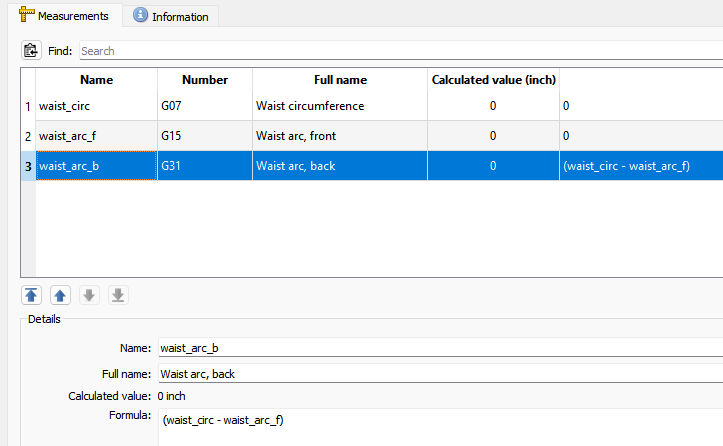Hallo, In the customer variables as well as in the measurements, the ‘name’ used in a formula must always have a lower row number. Can this be adjusted like in Excel, where the order in a list does not matter? This would make it possible to structure customer variables and measurement tables more clearly. Gr Michael
I assume you mean “Custom” variables - no “er” , and I assume you are referring to this situation:
Where waist_arc_f has to be below waist_circ to work:
Works:
Doesn’t work:
And the answer is… No. Due to the linear nature of how a pattern is parsed you can’t have circular references.
pitty. Why not?
For beginners is it quite comfortable to calculate some variables or measurements. I like to make it for my students “goldfish brain proofed”
for example to calculate the waist dart on the lowered waist the higher hip height. As long no tags in the custom(er) variables the list gets really chaotic. Sorry I am into UX-design
It’s due to the “formula” based nature, and fact the pattern & measurement XML’s (Dom Doc’s) are parsed in a sequential order. Since every measurement, variable, tool, and piece is based on formulas - which are evaluated on the fly as each element tag is parsed in sequential order - a formula can only contain the results of pre-existing formulas. That’s just how it is.
There’s just certain aspects of the Seamly apps that make it difficult to idiot proof without putting a lot of contraints on the applications.
Not really sure what you mean here?
As example for a top there are custom variables for the body and for the sleeve. It would be handy if it possible to select a group or a tag for top and sleeve. Right now I add a row XXX___Calculation___XXX following the calculation and row XXX___Sleeve___XXX for the sleeves variables etc… This is a mess. It would be handy to have a tag in order to see only what I need
Than is xml stupid. I will figure out if there an option to solve it.
It has nothing to do with XML. Again… it has to do with the formulas. Anytime you change a formula, those changes have to ripple through the pattern changing any other dependent formulas. i.e. The patten is reparsed sequnetially and the pattern built again. An anology would be like building a house. You can’t build the roof, until the walls are built, you can’t build the walls until the foundation is built, and you can’t build the foundation until the trees are cleared.
I doubt it. I’ve been working with the Valentina → Seamly code for 7+ years, and I can tell you - unless you want totally rewrite the apps from ground up - you’re not going to change the fact that the patterns and measurements work in a sequential order.
I trust you. I will not look into it. It sounds like a lot of time waisting for me.

